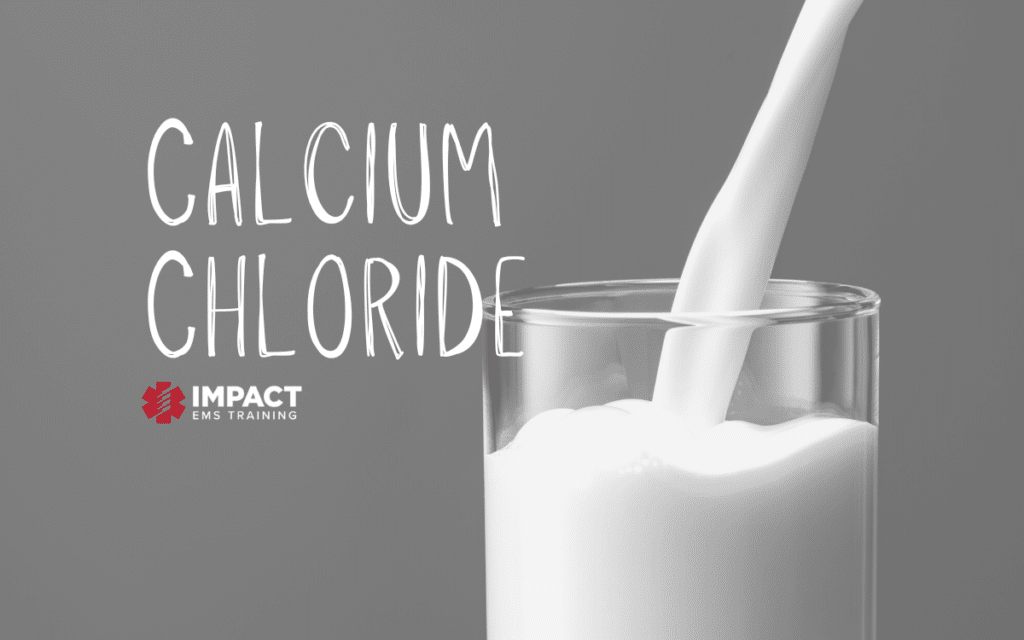
Talking about calcium really gives legitimacy to the “He needs some milk” video and memes to follow. Calcium is an essential component to our treatment plan of calcium channel blocker overdose, beta-blocker overdose, hyperkalemia, hypocalcemia, and hypermagnesemia.
Fun fact! 1G of calcium chloride is approximately equivalent in calcium content to 1 cup of 2% milk.
The difference is, our body is responsible for distributing calcium from milk instead of us from directly administering the calcium to the bloodstream. Now, the two main options for correcting some of these problems will be calcium chloride and calcium gluconate.
Think of chloride as the abrasive, amped up brother, and gluconate as the calm, democratic sister. She is one to always find a way to settle down those family arguments.
Now, this is probably due to the fact that calcium chloride is 3x more concentrated than calcium gluconate. But when both have essentially the same effects and treat the same things, why is one chosen over the other?
With calcium chloride being so concentrated, it is commonly dosed at 1 gram (sometimes higher when needed). With this level of potency, calcium chloride is incredibly caustic to our veins. This can cause irritation to the skin and vasculature at the injection site. Not only will your patient be uncomfortable, but in the event of extravasation (IV infiltration) severe tissue necrosis and sloughing will occur. Due to this, calcium chloride should really only be administered through a central line.
Calcium gluconate is the ideal sibling. This should be your go-to if/when you have the choice and when time allows you to be gentler. With calcium gluconate though, you will have less bioavailability compared to chloride. Meaning, it is going to require some more volume to exert the same effect. Calcium gluconate is safe for a peripheral line as it is far gentler on our patient’s vasculature. While in the event of extravasation, there is still a risk of tissue necrosis, but it is far less compared to her calcium chloride.
Current recommendations want you to shoot for calcium gluconate whenever possible if there is no central line access. The caveat to this is that administration of calcium gluconate should be done over 10 – 30mins. So in time-sensitive cases such as cardiac arrest, utilization of calcium chloride might be unavoidable.
References:
https://www.aliem.com/mythbuster-calcium-gluconate-raises-serum-calcium-as-calcium-chloride/
https://www.uptodate.com/contents/calcium-chloride-drug-information?search=calcium%20chloride&source=panel_search_result&selectedTitle=1~104&usage_type=panel&kp_tab=drug_general&display_rank=1
Calcium gluconate picture: https://www.meritpharm.com/product/calcium-gluconate-preservative-free-10-100-mg-ml-intravenous-injection-single-dose-vial-50-ml/
Impact EMS offers accredited certification and refresher courses in one trusted location. Fully prepare for certification exams and maintain licensure with skill building credits.






